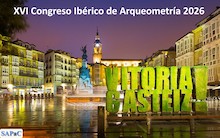Artículo: Multi-analytical investigation of thirteenth century slip-decorated tiles: tracing the origins of Tiebas Castle’s ceramics
- Título
- Multi-analytical investigation of thirteenth century slip-decorated tiles: tracing the origins of Tiebas Castle’s ceramics
- Autor(es)
- Iván Ruiz Ardanaz, Laurence de Viguerie, Esther Lasheras, Adrián Durán
- Sumario
- Tiebas Castle, located near Pamplona (Northern Spain), was constructed in the thirteenth century under the reign of Theobald II of Navarre. Among its most distinctive decorative elements were slip-decorated carreaux de pavement—dichromatic paving tiles that adorned multiple rooms within the Castle. These tiles bear strong stylistic and technological similarities to those found at various archaeological sites in the former county of Champagne (Northeastern France), indicating a connection between the two regions in terms of production techniques and artistic influences. To better understand their provenance and the artistic practices involved in their manufacture, we conducted a comprehensive analysis of the three primary raw materials: the red clay used for the ceramic body, the kaolin for the slip decoration, and the lead employed in the glaze. Comparative reference samples from both Champagne and Navarre were examined using a multi-analytical approach, including X-ray fluorescence (XRF), X-ray diffraction (XRD), and high-resolution inductively coupled plasma mass spectrometry (HR-ICP-MS). Our results revealed that the ceramic bodies from both regions were composed of decalcified clay, rich in quartz and haematite but low in calcite. However, significant geochemical differences emerged: the ceramic body of the Tiebas tiles closely matched local Navarre clay, with a notably lower zirconium content compared to Champagne samples, where zirconium levels were consistently higher. This strongly suggested that, while the production took place in Navarre, it was likely carried out by artisans from Champagne. Additionally, the kaolin used for the slip did not correspond to any known local Navarre sources, indicating it was imported. Its composition closely matched kaolin deposits from Champagne, further supporting the idea of material exchange between the two regions. Finally, this study also sheds new light on the provenance of the lead used in the glazes, offering fresh insights into medieval ceramic production networks.
- Revista
- The European Physical Journal Plus
- Año de publicación
- 2025
- Etiquetas
- cerámica medieval, procedencia
SAPaC. Contacto administrativo: teléfono 00 34 96 354 3619, correo electrónico: info ~ ARROBA ~ sapac.es

